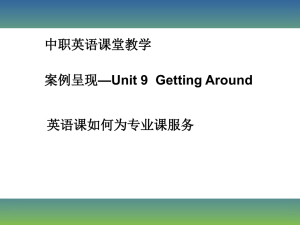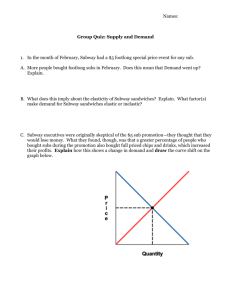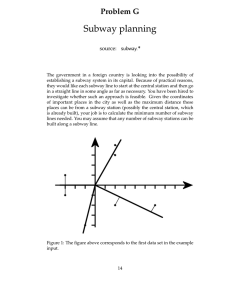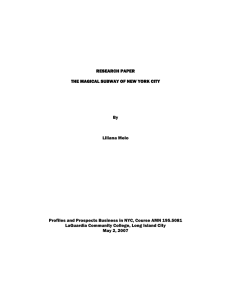11.329 Social Theory and the City
advertisement
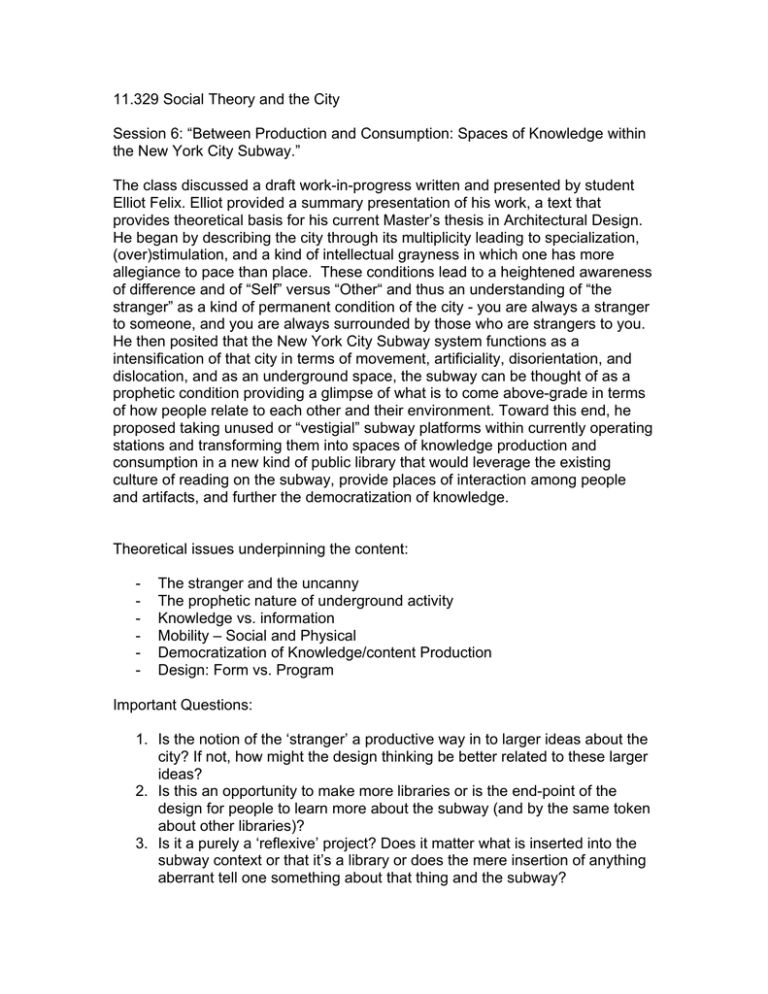
11.329 Social Theory and the City Session 6: “Between Production and Consumption: Spaces of Knowledge within the New York City Subway.” The class discussed a draft work-in-progress written and presented by student Elliot Felix. Elliot provided a summary presentation of his work, a text that provides theoretical basis for his current Master’s thesis in Architectural Design. He began by describing the city through its multiplicity leading to specialization, (over)stimulation, and a kind of intellectual grayness in which one has more allegiance to pace than place. These conditions lead to a heightened awareness of difference and of “Self” versus “Other“ and thus an understanding of “the stranger” as a kind of permanent condition of the city - you are always a stranger to someone, and you are always surrounded by those who are strangers to you. He then posited that the New York City Subway system functions as a intensification of that city in terms of movement, artificiality, disorientation, and dislocation, and as an underground space, the subway can be thought of as a prophetic condition providing a glimpse of what is to come above-grade in terms of how people relate to each other and their environment. Toward this end, he proposed taking unused or “vestigial” subway platforms within currently operating stations and transforming them into spaces of knowledge production and consumption in a new kind of public library that would leverage the existing culture of reading on the subway, provide places of interaction among people and artifacts, and further the democratization of knowledge. Theoretical issues underpinning the content: - The stranger and the uncanny The prophetic nature of underground activity Knowledge vs. information Mobility – Social and Physical Democratization of Knowledge/content Production Design: Form vs. Program Important Questions: 1. Is the notion of the ‘stranger’ a productive way in to larger ideas about the city? If not, how might the design thinking be better related to these larger ideas? 2. Is this an opportunity to make more libraries or is the end-point of the design for people to learn more about the subway (and by the same token about other libraries)? 3. Is it a purely a ‘reflexive’ project? Does it matter what is inserted into the subway context or that it’s a library or does the mere insertion of anything aberrant tell one something about that thing and the subway? 4. How does one inspire people (with architecture) to get more knowledge? 5. Can the subway be understood as a communication system?

